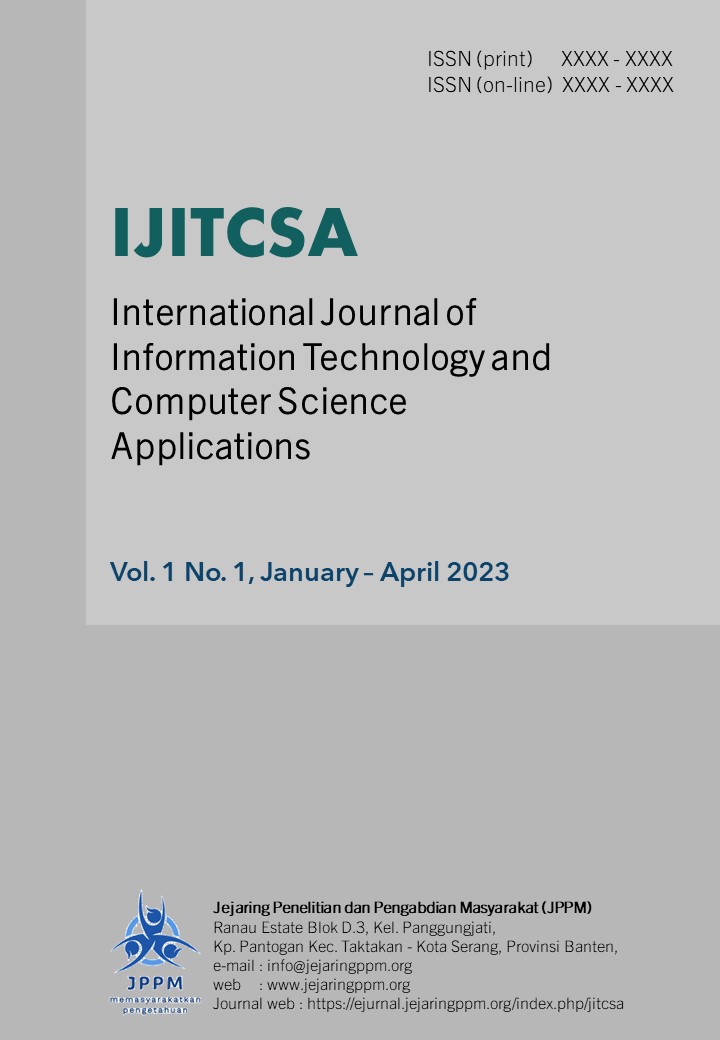Data Analytics Application in Fashion Retail SMEs (A Case Study in Caracas Fashion Store)
DOI:
https://doi.org/10.58776/ijitcsa.v1i1.17Keywords:
Predictive Analytics, Web Traffic, Customer Conversion, Google AnalyticsAbstract
Data analytics plays a paramount role in maximizing productivity and profitability for businesses by deriving insights from pre-existing data to predict market trends and client habits to make better business decisions. In accordance with Industrial Revolution 4.0, most SMEs have begun to implement an e-commerce business model, thus, customer data is generated at an exponential rate, allowing SMEs to further develop their services for greater user satisfaction. However, the abundance of unsorted and ambiguous data leads to issues such as server overload and inefficient customer sales cycle tracking. This paper will explain the application of data analytics techniques and architectures to overcome these issues in a fashion retail SME, as well as the benefits and drawbacks of these solutions.
References
Z. Salim, C. Ooi, W. Yan, M. Petraeus, and Y. Sivakumar, “Built on just $500, this s'pore brand has now grown into a multi-million fashion powerhouse,” Vulcan Post, 30-Jun-2021. [Online]. Available: https://vulcanpost.com/628312/love-bonito-turned-500-into-multi-million-fashion-powerhouse/. [Accessed: 12-Mar-2022].
“How data analytics impacts small businesses in 2023,” business.com. [Online]. Available: https://www.business.com/articles/the-state-of-data-analytics-in-2019/#how-can-smbs-use-data-analytics. [Accessed: 13-Mar-2022].
R. Rahutomo, Y. Lie, A. S. Perbangsa, and B. Pardamean, “Improving conversion rates for fashion e-commerce with a/B testing,” 2020 International Conference on Information Management and Technology (ICIMTech), 2020.
K. Lobaugh, B. Stephens, C. Reynolds, R. Bamford, and S. Davis, “The future is coming ... but still one day at a time,” Deloitte Insights. [Online]. Available: https://www2.deloitte.com/us/en/insights/industry/retail-distribution/retail-and-consumer-products-predictions.html. [Accessed: 30-May-2022].
H. Surbakti and A. Ta’a, “Managing knowledge business intelligence: A cognitive analytic approach,” AIP Conference Proceedings, 2017.
V. Kumar and M. L., “Predictive analytics: A review of trends and Techniques,” International Journal of Computer Applications, vol. 182, no. 1, pp. 31–37, 2018.
O. K., O. O., and A. O., “Predictive analytics for increased loyalty and customer retention in telecommunication industry,” International Journal of Computer Applications, vol. 179, no. 32, pp. 43–47, 2018.
K. Shah, H. Patel, D. Sanghvi, and M. Shah, “A comparative analysis of logistic regression, Random Forest and KNN models for the text classification,” Augmented Human Research, vol. 5, no. 1, 2020.
E. T. Bradlow, M. Gangwar, P. Kopalle, and S. Voleti, “The role of Big Data and predictive analytics in retailing,” Journal of Retailing, vol. 93, no. 1, pp. 79–95, 2017.
. V. Kumar and G. A. Ogunmola, “Web analytics for knowledge creation,” International Journal of Cyber Behavior, Psychology and Learning, vol. 10, no. 1, pp. 1–14, 2020.
T. Semerádová and P. Weinlich, “Using google analytics to examine the website traffic,” Website Quality and Shopping Behavior, pp. 91–112, 2020.
D. Walsh, P. Clough, M. M. Hall, F. Hopfgartner, J. Foster, and G. Kontonatsios, “Analysis of transaction logs from National Museums Liverpool,” Digital Libraries for Open Knowledge, pp. 84–98, 2019.
M. A. Wani and S. Jabin, “Big data: Issues, challenges, and techniques in business intelligence,” Advances in Intelligent Systems and Computing, pp. 613–628, 2017.
H. Surbakti and A. Ta'a, “Tacit knowledge for business intelligence framework: A part of unstructured data?,” Journal of Theoretical and Applied Information Technology, vol. 96, no. 3, pp. 616–625, Feb. 2018.
M. Bala, D. Verma, “A Critical Review of Digital Marketing”. International Journal of Management, IT & Engineering, 8(10), 321–339, 2018.
A. Brooks, “7 ways a mere exposure effect can boost conversions,” Venture Harbour, 03-Nov-2021. [Online]. Available: https://www.ventureharbour.com/the-mere-exposure-effect-7-ways-to-use-it-to-boost-your-conversions-with-examples/. [Accessed: 17-May-2022].
Y. Wang, L. A. Kung, and T. A. Byrd, “Big Data Analytics: Understanding its capabilities and potential benefits for healthcare organizations,” Technological Forecasting and Social Change, vol. 126, pp. 3–13, 2018.
J. L. Leevy, T. M. Khoshgoftaar, R. A. Bauder, and N. Seliya, “A survey on addressing high-class imbalance in Big Data,” Journal of Big Data, vol. 5, no. 1, 2018.
“Firebase Crashlytics,” Google. [Online]. Available: https://firebase.google.com/docs/crashlytics. [Accessed: 12-May-2022].
J. García, V. De Lera, D. Lacambra, F. Gimeno, and Á. Alesanco, “Design and development of an Android app based on Firebase in the study of unsportsmanlike behaviors in grassroots tennis competitions,” Journal of Mobile Multimedia, 2021.
T. T. Oo, “Design and implementation of bandwidth monitoring, line aggregation of VoIP,” International Journal of Advanced Trends in Computer Science and Engineering, pp. 1326–1331, 2019.
J. Shin and J. Yu, “Targeted advertising and consumer inference,” Marketing Science, vol. 40, no. 5, pp. 900–922, 2021.
H. Lipyanina, A. Sachenko, T. Lendyuk, S. Nadvynychny, and S. Grodskyi, “Decision tree based targeting model of customer interaction with Business Page,” Computer Modeling and Intelligent Systems, vol. 2608, pp. 1001–1012, 2020.
I. Someh, M. Davern, C. F. Breidbach, and G. Shanks, “Ethical issues in Big Data Analytics: A stakeholder perspective,” Communications of the Association for Information Systems, pp. 718–747, 2019.
Downloads
Published
How to Cite
Issue
Section
License
Copyright (c) 2023 Santorini Surabani, Bradlow Rodriguez

This work is licensed under a Creative Commons Attribution-NonCommercial-ShareAlike 4.0 International License.
Attribution 4.0 International
You are free to:
- Share — copy and redistribute the material in any medium or format for any purpose, even commercially.
- Adapt — remix, transform, and build upon the material for any purpose, even commercially.
- The licensor cannot revoke these freedoms as long as you follow the license terms.
Under the following terms:
- Attribution — You must give appropriate credit , provide a link to the license, and indicate if changes were made . You may do so in any reasonable manner, but not in any way that suggests the licensor endorses you or your use.
- No additional restrictions — You may not apply legal terms or technological measures that legally restrict others from doing anything the license permits.
Notices:
You do not have to comply with the license for elements of the material in the public domain or where your use is permitted by an applicable exception or limitation .
No warranties are given. The license may not give you all of the permissions necessary for your intended use. For example, other rights such as publicity, privacy, or moral rights may limit how you use the material.





